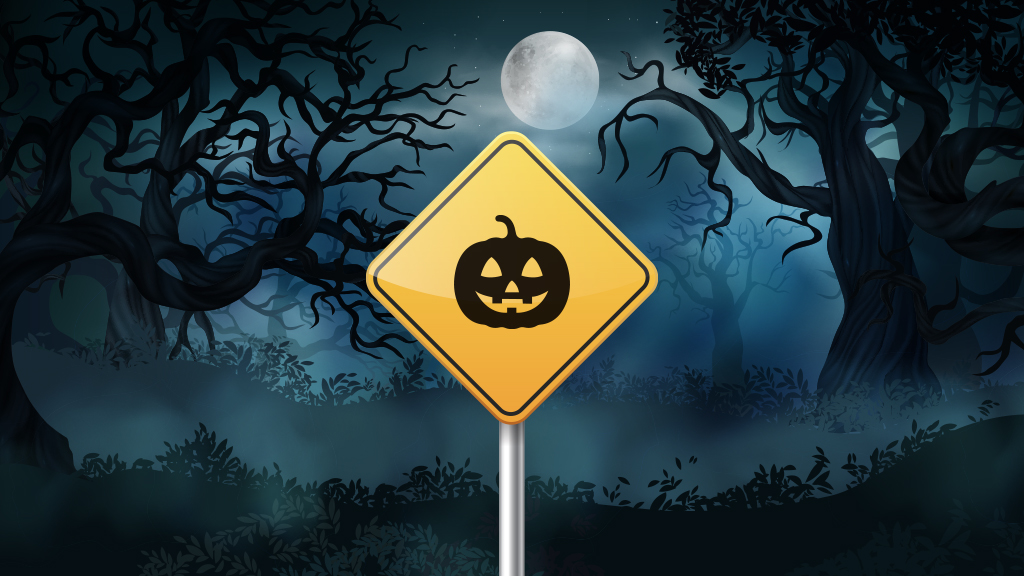Safety Blog
Halloween Activities: Don’t Be Spooked by the Need to Include Lab Safety
By Ken Roy
Posted on 2022-10-13

Disclaimer: The views expressed in this blog post are those of the author(s) and do not necessarily reflect the official position of the National Science Teaching Association (NSTA).
As with most holidays, there is something about the buildup a week or two in advance of Halloween that gets students very excited! To keep their students on task and learning, science/STEM (science, technology, engineering, and math) teachers often take advantage of this excitement by introducing Halloween activities and demonstrations in their lab. However, teachers must not forget that lab safety doesn’t take a holiday. Before doing any Halloween-oriented lab activity or demonstration, remember to first conduct the “AAA” approach to safety.
Assessing Halloween Activity Hazards and Risks
The “AAA” approach to lab safety activities, including those selected for Halloween, is encouraged by the NSTA Safety Advisory Board for emphasizing safety in school science/STEM labs. The acronym "AAA" includes a hazard Analysis, risk Assessment, and appropriate safety Action.
A full potential hazard analysis is the first step when considering a Halloween lab activity. To locate the hazards for a lab or demo, one reliable source is the Safety Data Sheet’s Section 2—Hazard(s) identification. All hazards of a chemical and the required label elements are listed. Other examples of sources for critical hazard information include inquiring of colleagues and consulting the NSTA safety portal/resources and NSTA Safety Blog.
Once potential hazards are analyzed for the Halloween lab activity, the associated resulting risks must be assessed. For example, if the chemical is flammable and vapor builds up, a flash fire and jetting flame can occur. The risk in this case includes extreme heat and active flame exposure for observers.
Lastly, determine the appropriate safety actions that should be taken as precautions, given the potential hazards and resulting risks of the Halloween activity or demo. Safety actions may include elimination (i.e., physical removal of the hazard), substitution (i.e., replace the hazard), engineering controls (i.e., isolate people from the hazard), administrative controls (i.e., change the way people work), and PPE (i.e., protect the students and others with personal protective equipment). [Source: National Institute for Occupational Safety and Health (NIOSH) Hierarchy of Controls]
Halloween Activity Resources
The American Chemical Society (ACS) is a great resource for Halloween Chemistry. The ACS Halloween Chemistry site at https://www.acs.org/content/acs/en/education/students/highschool/chemistryclubs/activities/halloween-chemistry.html says, “Learning chemistry doesn’t have to be scary. Well, except on Halloween! Pick your favorite link and celebrate October 31 with some spooky science! Look for creepy chemistry categories like dry ice, body parts, costumes, pumpkins, and food.” Activity topics on this site include costumes, pumpkin, food, dry ice, body parts, and “other.”
For example, under “other,” you’ll find Halloween chemistry demonstrations and costumes #spookychem. One video of a demo is titled Elephant Toothpaste Pumpkin Demo. In it, the teacher puts 400 mL of 35% H2O2, a squeeze of liquid dish soap, and several drops of food coloring in a 500-mL Erlenmeyer flask, which is then placed inside a carved pumpkin. Next, 100 mL of 2 M KI or NaI solution is added, and the teacher holds down the gourd’s lid as a thick, frothy foam comes bursting from the pumpkin’s carved features.
Again, before doing this or other ACS activities, it is important to conduct the AAA protocol for safety. Things like indirectly vented chemical splash goggles, gloves, non-latex aprons, and other protective items should be used for this and other ACS activities.
Another Halloween activity is titled Ghost Rockets for Kids. The following materials list and instructions are provided.
Materials
Film canisters
Cornstarch
Water
Black marker
Alka-Seltzer™ tablets
Stir stick
Directions
Begin by drawing ghost faces on clear film canisters. We used a permanent marker to avoid smears during play.
Once the marker is dry, add 1–3 spoons of cornstarch to each film canister. Then fill the canisters roughly 1/3 of the way with warm water and stir until the cornstarch is dissolved and the ingredients are combined.
You will want to set off one ghost rocket at a time.
Begin by breaking a tablet of Alka-Seltzer into 2–3 pieces. Then quickly drop the pieces into the canister, put the lid on, flip the rocket over, set it down, and step back! The ghost rocket will almost immediately go flying high into the air!
Again, remember AAA before doing any of these activities.
In the End
Halloween activities can be both fun for students and provide educational learning experiences in science/STEM. They offer good opportunities to teach important scientific concepts. Students enjoy them and have fun doing so, while also developing critical-thinking and problem-solving skills. Finally, Halloween activities reinforce the need for identifying potential safety hazards, doing a risk analysis, and taking appropriate safety action for a safer Halloween hands-on activity or demonstration.
Submit questions regarding safety to Ken Roy at safersci@gmail.com. Follow Ken Roy on Twitter: @drroysafersci.
Chemistry General Science Physical Science Safety STEM Middle School Elementary High School Preschool


